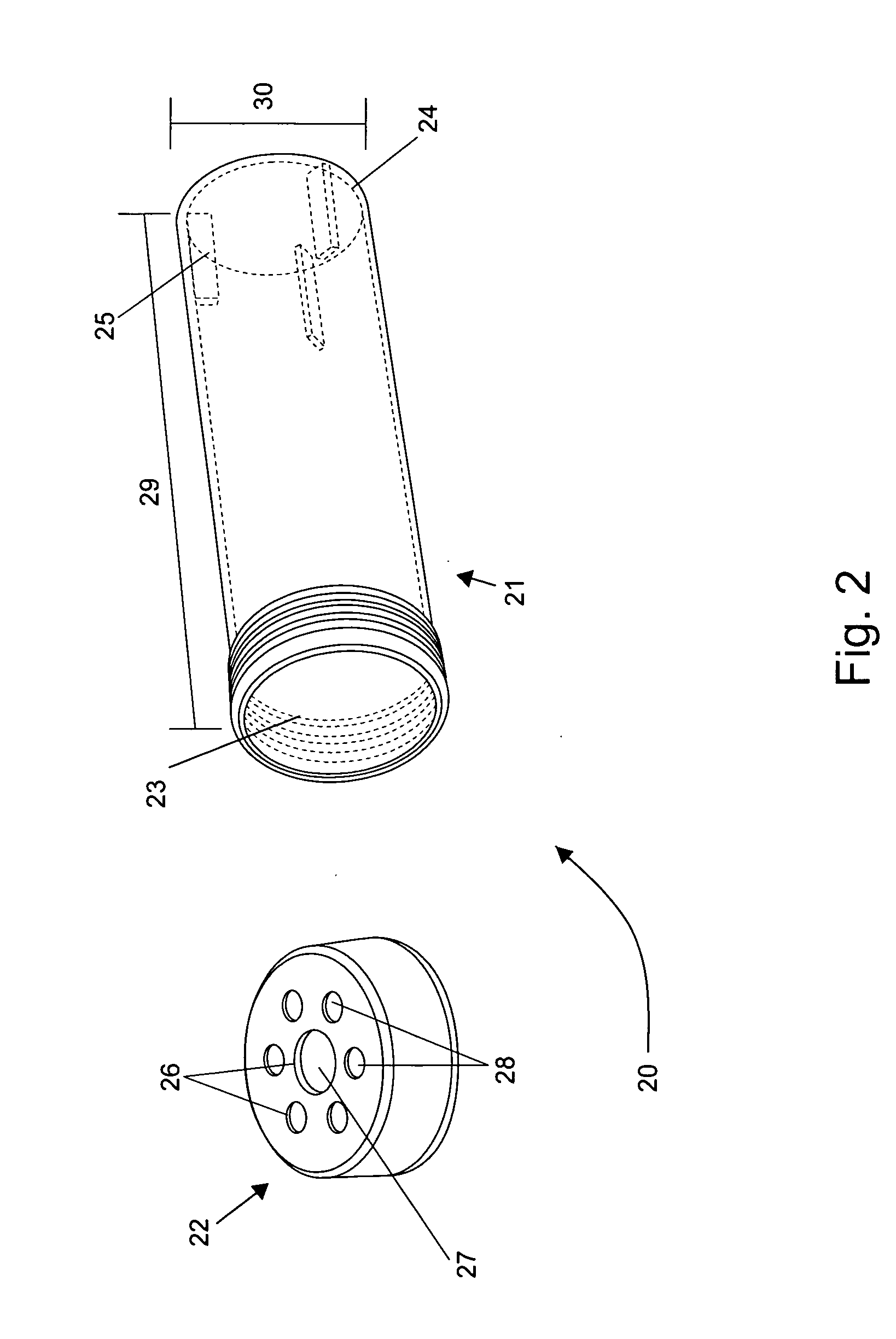Disposable mini-bioreactor device and method
a bioreactor and mini-bioreactor technology, applied in the field of biological material processing methods and systems, can solve the problems of inability to readily available robotic handling systems, inability to test, and inability to meet the requirements of small-scale cell culture containers, etc., and achieve the effect of rapid testing
- Summary
- Abstract
- Description
- Claims
- Application Information
AI Technical Summary
Benefits of technology
Problems solved by technology
Method used
Image
Examples
example 1
50 ml Mini-Reactor Tubes
[0057]A disposable mini bioreactor device is presented and is comprised of a disposable plastic vented septum cap and a matching cylindrical container for housing bio-solutions for processing.
[0058]One version of the system utilizes pre-existing standard 50 ml centrifuge tubes and caps as shown in FIG. 1. In this first version the standard cap was modified (an array of 7 symmetrical holes punched with a die or laser cut. See FIG. 3A) in such a way to include one centrally located opening or port to accommodate a Class VI medical grade silicone septum. See septum 34 at the inlet-outlet port in cutaway drawing of FIG. 3C. Circularly and evenly spaced round openings provide gas exchange ports below which is mounted an integral 0.2 μm, 0.22 μm, 0.45 μm, or 3 μm membrane vent filter membrane ring 35 (FIGS. 1 and 3).
[0059]The septum and membrane ring were each integrally attached via ultrasonic welding to the inside of the cap via an injection-molded retainer-ring ...
example 2
Cell Culture in Mini-Reactor
[0064]As depicted in FIG. 7, mammalian cells were grown to high density and maintained at high viability, demonstrating the utility of the present invention for culture of eukaryotic cells. In a test run, mammalian cells were inoculated into two different culture media (Media A & Media B) and cultured in a 37 degree Celsius incubator with 5% CO2 and 80% humidity environment. Experiment was carried out in duplicates and controls were setup in vented centrifuge tubes (TPP) in parallel. Samples were taken for cell count and viability analysis during the experiment. Septa having a preformed opening or slit (typically an “H” slit or “Y” slit) were entered using a 3 mm diameter flat-tipped cannula. No contamination occurred. Results showed that cells were able to grow to high density and maintained at high viability. Cell culture performance, in terms of cell counts and viability, at the present invention was also comparable to the vented centrifuge tubes (TPP)...
PUM
| Property | Measurement | Unit |
|---|---|---|
| diameter | aaaaa | aaaaa |
| diameter | aaaaa | aaaaa |
| diameter | aaaaa | aaaaa |
Abstract
Description
Claims
Application Information
 Login to View More
Login to View More - R&D
- Intellectual Property
- Life Sciences
- Materials
- Tech Scout
- Unparalleled Data Quality
- Higher Quality Content
- 60% Fewer Hallucinations
Browse by: Latest US Patents, China's latest patents, Technical Efficacy Thesaurus, Application Domain, Technology Topic, Popular Technical Reports.
© 2025 PatSnap. All rights reserved.Legal|Privacy policy|Modern Slavery Act Transparency Statement|Sitemap|About US| Contact US: help@patsnap.com



